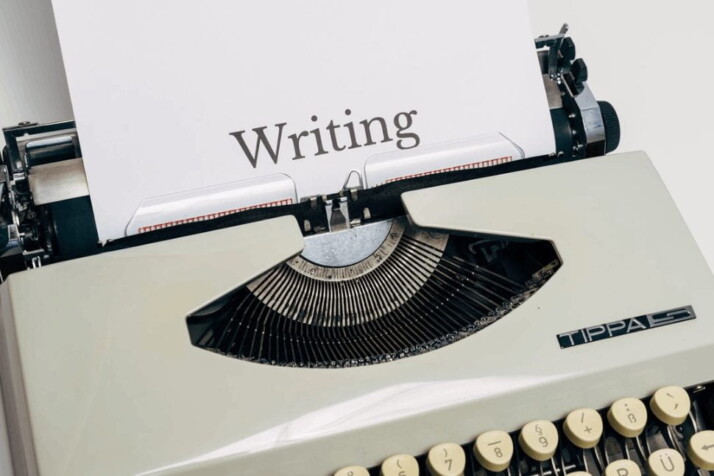To fully grasp what plagiarism entails, let’s consider these plagiarism examples.
It could be copying another artist’s work or stealing credit for another scientist’s study, Plagiarism can also involve modifying another app’s code without crediting the original programmer.
In other words, it doesn’t only happen in the context of writing.
Taking credit for someone else’s work gives oneself unjustified credit for their time and effort. Understanding what plagiarism is and how to properly credit authors is the best way to avoid being accused of (or unwittingly committing) plagiarism.
Let’s look at some cases of plagiarism to assist you in understanding it.

5 Common Plagiarism Examples to Know and Avoid
Plagiarism is copying, stealing another author’s words or ideas without providing credit or citing the original author. It’s considered academic dishonesty and can lead to expulsion or program rejection.
Plagiarism can take many different forms. Here are some common forms of plagiarism with examples.
1. Total Plagiarism
When a writer submits someone else’s work under their own name, this is an example of overt plagiarism. Paying someone to write a paper for you and submitting it as your own is stealing.
Example:
Submitting a research paper that your older brother prepared and submitted six years ago.
2. Direct plagiarism
Direct plagiarism is comparable to complete plagiarism in that it involves the outright appropriation of another writer’s words. The difference between the two is the amount of plagiarism in the paper.
It’s the entire paper with complete plagiarism. Specific chunks or paragraphs are included without attributing (or even acknowledging) the author in direct plagiarism.
Example:
Dropping a phrase or two from your source directly into your work without quoting or citing the source.
3. Self Plagiarism
You might be astonished to learn that you have the ability to plagiarize yourself.
How is this possible? After all, your original ideas are yours to utilize anyway you choose… right? Yes, but there’s a catch.
Example 1:
Let’s imagine you authored an essay two years ago about the benefits and drawbacks of modifying your city’s zoning laws. Today, you’re working on a research paper about how particular zoning laws have influenced other cities over the last decade.
Self-plagiarism would be taking content from your essay in your research paper. You can undoubtedly utilize the same sources, and as long as you correctly cite them, you won’t be accused of plagiarism.
Example 2:
If you write professionally, self-plagiarism can be a problem. When you’re hired to write for a customer, the work belongs to them.
Plagiarism is when you use same exact words for subsequent clients. Self Plagiarism can hurt your professional reputation as well as make your clients look bad.
4. Source Based Plagarism
Understanding source based plagiarism might be difficult. With this type of plagiarism, the writer may correctly cite their sources yet portray them in a misleading manner.
Example:
A writer may quote a secondary source yet only give credit to the primary source.
Another example is quoting the wrong source or fabricating sources.
5. Accidental Plagiarism
Here the writer is unaware that they are plagiarizing another’s work.
The following are examples of unintentional plagiarism:
- Incorrectly citing sources
- Failure to use quotation marks around cited content
- Even unintentional plagiarism might result in penalties, such as failing an assignment.
Consequences of Plagiarism
Copyright laws stop people from copying written works, and if you get caught, you will have to deal with the consequences.
If you are accused of plagiarism, the best thing is that you get a bad grade on a paper. The worst thing that could happen is that you get sued for copyright infringement.
Plagiarism results in legal troubles, financial loss, and a tarnished reputation.
To Wrap Up
Now you know what plagiarism is because of the well-defined examples. It should become easier to spot plagiarisms, understand your past mistakes, and move forward plagiarism free!
Explore All Plagiarism Checker Articles
Plagiarism in Journalism: Its Meaning and How to Avoid It
Writing is a wide array of interests that covers different professions and passions. In terms of news writing, journalists should…
The Difference Between Plagiarism and Appropriation in Art
People confuse the difference between plagiarism and appropriation. What they don’t understand is that these two terms differ from one…
6 Ways to Write Plagiarism Free Content — A Bloggers Guide
Generating unique plagiarism free content is one of the most important factors for optimizing your content and achieving higher SERP…
Using Plagiarism Checkers for Research Papers
With the web being so vast and expansive, it’s no wonder more, and more people are turning to it for…
6 Best Free Plagiarism Checker Online
What is the best free plagiarism checker today? You might have a paper or assignment due in the upcoming day,…
How to Copy and Paste Without Plagiarizing
The copy and paste function in your word processor is powerful. It can save your lots of time. But it…
